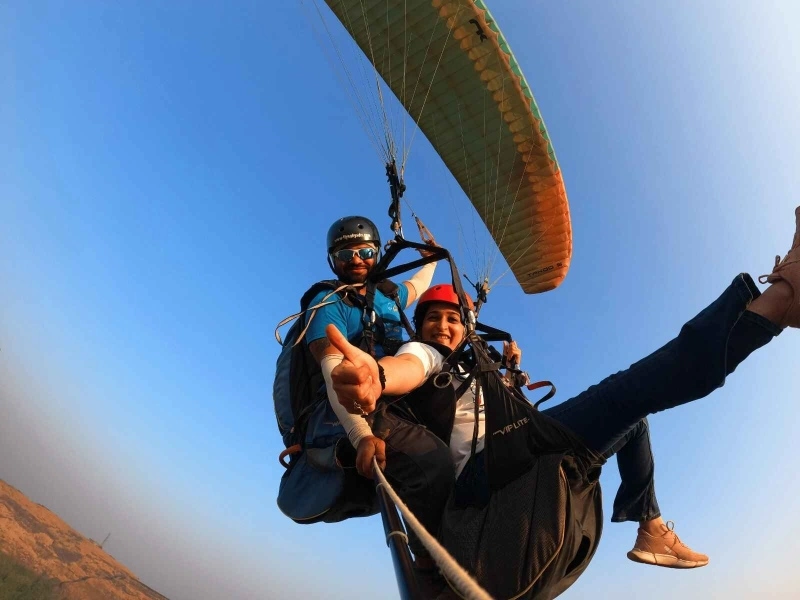Anatomy of a Paraglider: Key Components and Their Roles
By embracing such aspects of paragliding tips, a pilot can indeed deepen his engagement with this sport, augment his proficiency

A flysahyadri paraglider indeed is more than merely equipment. Rather this is a marvel both of ingenuity and engineering, created for harnessing nature’s forces and offers you the liberty of exploring the high skies. Right from its elaborate web lines & controls to the beautiful canopy, each facet plays an imperative part in the airborne adventure. From the canopy which creates the wings core to the harness which cradles the rider in mid-air, every part narrates a tale and an intention to fulfill. Keep reading to know more.
A Paraglider’s Anatomy Unveiled
Let’s unravel the secret to a paraglider’s anatomy throwing light into both its functionality and design.
-
Canopy-a paraglider’s main component, a canopy is essential to generate lift and control the flight. Manufactured of lightweight, durable material such as rip-stop nylon, it has several cells which upon inflation fill with air, thus giving the needed wing shape. It is this shape that lets a paraglider in effectively gliding through the air. The canopy’s aerodynamic design along with the skillful control of the pilot paves the way for the wonderful art of flight while in the sky.
-
Lines-a paraglider’s lines are literally its lifelines. Manufactured of materials that are lightweight yet strong, like Kevlar or Dyneema, such lines link the harness and the canopy and play an imperative part to support the weight of the pilot and also control the wing’s shape and stability at the time of the flight. A paraglider’s lines allow precise control & maneuverability within the air. Its carefully engineered arrangement, durability, and strength are crucial for safe and agreeable flying experiences.
-
Risers-these are strong straps which connect the canopy with the harness of the pilot. By adjusting these risers tension, the pilot helps in controlling and rolling of the paraglider, steering it efficiently through the air. This control is imperative to uphold maneuverability and stability at the time of the flight. Risers in fact are instrumental to translate the inputs of the pilot into precise control on the orientation of the paraglider and air movement. Their responsiveness, strength, and adjustability are vital to uphold safety and stability all through the flight.
-
Harness-acting as the seat of the pilot in the sky, it is in the harness where the pilot hangs or sits at the time of the flight. A modern harness is designed for support, comfort, and safety, often times using sturdy materials, adjustable straps, and padding. A harness that is well-designed along with augmenting the flying experience of the pilot also offers protection at the time of in-flight turbulence, landing, and takeoff.
-
Brake Toggles-these are the essential control mechanism to steer the paraglider. Fixed to a rear riser, such toggles let the pilot in adjusting the angle and shaping the wing, paving the way for good control over turning, speeding up and slowing down. Mastering the usage of a brake toggle is vital for safely and effectively piloting a paraglider.
-
Speed Bar-There are some paragliders that come with a foot-operated and speed bar device which lets the pilot in increasing the paraglider’s speed by adjusting the attack’s angle of the canopy. Via pushing the bar speed, the pilot can help in streamlining the wing and increasing forward speed, helpful to cover longer distances or fly in stronger winds.
-
Reserve Parachute-in paragliding safety is crucial that is why most pilots carry with them a reserve parachute like a precautionary measure. Kept in a devoted compartment on a harness, this parachute can be used during the malfunction of a canopy, incapacitation of a pilot, or any other emergency. Its function is to bring the pilot safely to the ground, curtailing the perils of injury.
-
Wingtips-a paraglider’s wingtips are a canopy’s outermost edges. These play an imperative part to control the wing’s aerodynamics during flight. A pilot is capable of manipulating the wingtips for initiating turns and adjusting the paraglider’s bank angle, thus leading to precise control & maneuverability.
-
Airspeed Indicator- Advanced paragliders might feature airspeed indicators that offer real-time response on the airflow speed over the wing. The instrument might prove valuable for pilots in upholding optimal speeds and gauging performance in different wind conditions.
-
Weather Instruments- prior to taking the flight, often a pilot rests on weather instruments like weather forecasts, wind socks, and anemometers for assessing current as well as forecasted atmospheric conditions. In fact this information aids them in making right decisions regarding where and when it is safe in flying, considering factors such as thermal activity, direction, and wind speed.
Wrapping Up
By embracing such aspects of paragliding tips, a pilot can indeed deepen his engagement with this sport, augment his proficiency, and also develop a strong culture both of safety & camaraderie in the paragliding community. If you seek more information simply browse flysahyadri
Fly Sahyadri Team
Paragliding Expert
An experienced paragliding instructor and pilot with over a decade of flying experience. Passionate about sharing knowledge and ensuring safe flying practices for all adventure enthusiasts.
Related Articles

Choosing the right kit for adventure flying or hike-and-fly skills can become a trade-off between lightweight and comfort. Bastienne Wentzel explores the options

Simply follow these summer-friendly paragliding tips for an invigorating flying experience. For additional information on paragliding visit flysahyadri

No matter you are seasoned photographer or a novice, capturing the cherished moments at the time of paragliding is indeed an experience you will recall for years to come